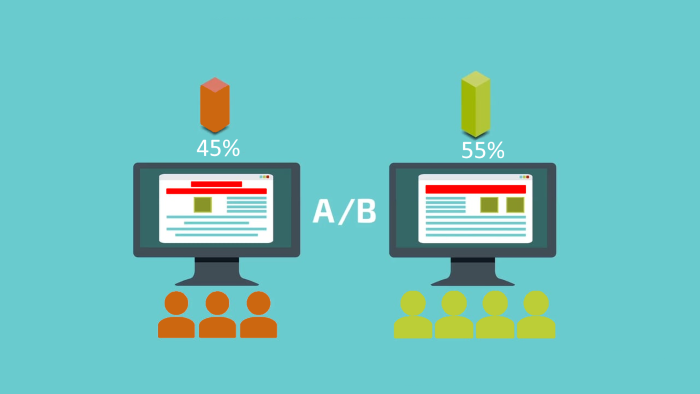A Quick Guide To A/B Testing In Google Analytics

Designing a successful lead generation website is both an art and a science. Google Analytics allows you to test which landing pages and design ideas deliver the best results for your business, allowing you to optimise your website for conversions. Making changes to the layout of your content will allow your company to test design ideas, and make sure you choose the most effective components for your goals.
There are many testing services out there, but Google Analytics has the distinct advantage of being free for most users. Its tool set is robust and with a little bit of work your company will be able to learn what design features create additional revenue.
A/B testing relies on two similar designs that are meaningfully different. Over the course of the experiment Google Analytics will show the A and B version of the web pages to your ordinary traffic, and when one of them achieves the goal you set at the beginning, it will be declared the winner.
How It Works
To begin, your website will have to have Google Analytics installed. This isn't a difficult thing to do and simple instructions can be found here.
1) Create New Experiment
First you will need navigate to the “Behaviour” section of Google Analytics and then to “Experiments.” Once there, all you have to do is click on the button for “Create Experiment.”
2) Choose An Experiment
Once you create a new experiment, you will be asked to name it and choose the “Objective.” This will require you to select the “#winning” parameters, so Google Analytics will know which of the two web designs has won.
You have three areas to choose from:
- Select an existing Goal (like opt-ins or purchases)
- Select a Site Usage metric (like bounce rate)
- Create a new objective or Goal (like conversion rates)
There are also advanced options to choose from, but for a straightforward A/B Test they are switched off by default. In a standard test the experiment will split web traffic into two groups. How you decide to choose a winner is up to you. Our team can advise you on the best parameters to use for your business.
3) Configure Your Experiment
Now all you have to do is copy and paste the URLs for the pages you want to test. You can name them if you like, but Google Analytics will number them for you otherwise.
Simple!
4) Adding The Script Code To Your Pages
Depending on how technically confident you are, this is either very easy, or the most time intensive step in the process.
An explanation of how to actually add the script code to your pages is beyond the scope of this article, but thankfully Google has provided a toggle button that will email all the code to your tech department or web development partner.
Once all the code has been added to the page, your A/B test is set up!
Why Testing Makes A Difference
It is amazing what small design differences can do in the overall performance of your website. In many cases variations on how you design your landing pages or sales funnel will make a huge impact on conversion rate or opt-ins; and you simply won't know how effective a change is until you test it.
Split testing is a powerful tool for optimising your web strategy, but getting a site and testing programme set up can be difficult without the right skills. Trying to train your existing employees to do web optimisation is usually a false economy, so working with an agency like JDR will provide your company with a lot of experience across all the digital marketing channels.


